|
The Case of Chiang Mai 1950 to 2020
Chiang Mai tourism is in the worst crisis of its 70 year history. According to a February 1, 2021 article by Pim Kemsingki in Citylife magazine, tourism is never going to recover. She has talked to a lot of individuals about a lot of closed shops that used to cater to tourists’ need for transportation, housing and guides. The COVID-19 epidemic which closed Thailand’s borders in order to isolate and protect the health of people living in Thailand has reduced tourism from 10 million in 2018 to just about zero. For a while during the second half of 2020 it looked like most tourism enterprises might hang on, and then the big wave hit, beginning with an outbreak in Samut Sakhon Province. Very few tourists will put up with 2 weeks in a quarantine hotel in order to spend time in Chiang Mai looking at flowers. Domestic tourism in Chiang Mai depends on seasonal influxes during the cool season from late November through January when the weather and the Yipeng / Loy Kratong holidays draw millions from around the country. Flowers are at their best, and there is a Flower Festival the first weekend of February. Hotels fill up during this season. Another mass gathering can be expected during the Songkran Festival, April 13-15. Those large gatherings were cancelled by the pandemic. The government attempted to stimulate domestic tourism during 2020, offering subsidies for groups going on tours within the country. This helped a little, but was eventually disappointing, and then a couple of COVID scares shut down domestic tourism entirely. Overseas tourism to Chiang Mai has expanded every year since Thailand instituted the international plan for converting air transportation in and out of Chiang Mai up to international standards following a blueprint provided by two taskforces in 1975 and 1977 carried out by the Pacific Asia Travel Association (PATA). According to insiders in the hotel industry (note the source), the shut-down has become devastating. They submit that a full 65% of Chiang Mai’s Gross Domestic Product (GDP) depends on tourism. Every year from 1970 to 2018 tourism grew. At the peak, 3.2 million overseas tourists and 7.5 domestic tourists came to Chiang Mai. 70.3% of them were what the industry calls “free independent tourists” and 29.7% came in tour groups. There has been a noticeable and controversial increase in tour groups from China, especially following the success of a 2012 blockbuster Chinese comedy filmed in Thailand. “Lost In Thailand” was the highest grossing movie of all time in China the year it came out. It has often been observed that there are two major factors that have boosted tourism in Thailand. One has been successful films, including “The King and I”, “Man with a Golden Gun” (a James Bond movie filmed in Phuket), “Bridge Over the River Kwai”, “Blue Lagoon”, and “The Beach” as well as “The Ugly American”. The other promoter of tourism has been airline industries, beginning with Pan American Airlines, and then Thai Air in partnership with Scandinavian Airline (SAS). [The most interesting article, with great photographs and details, that describes how Thailand’s tourism grew, is a June 13, 2018 blog post entitled “The Golden Era of Thailand Tourism: 1947-1979” on the website My Thailand. If you are interested enough in Thai tourism to have read this far you really should read Jeff’s article.] To my knowledge, the most influential individual to develop tourism in Chiang Mai was Mr. Kraisri Nimmanhaemin, whom I had a chance to visit in about 1966. Tourism was picking up, and Khun Kraisri thought Chiang Mai should be a premier destination in Thailand because of its cultural diversity, religious attractions, climate, and history. He managed to have PATA come to Chiang Mai for one of its annual meetings. In order to get the town ready, he built the Rincome Hotel on Huay Kaew Road, and then had it connected straight to the airport. He also developed a plan to convert the road from the Chiang Mai Railway Station to the town of Sankampaeng into a strip of handicraft showcases where tourists could conveniently see traditional crafts being made in workshops that had formerly been scattered all over the district and often in people’s houses. Anchored by silk production in Shinawatra family factories in Sankampaeng, and an umbrella cooperative in nearby Borsang, silver, laquerware, wood carving, bronzeware, and celadon stoneware factories and salesrooms were constructed along the road. Elephant camps, mountain treks, and resorts quickly followed. Khun Kraisri was also the moving force behind other big enterprises, including the acquisition of land (vast amounts of land) for Chiang Mai University. He was a leader in a movement to restore historic temples and to promote traditional festivals as events which attracted more than nearby participants. His business interests were extensive but he was sure that whatever was good for Chiang Mai was good for him, too. The tourists hoped for by Khun Kraisri and Lieutenant General Chalermchai Charuvastr, Director General of the Tourist Organization of Thailand, would be flying in, staying 3 days, and leaving with bargains they had acquired. The Royal State Railway also expanded services (in all honesty the new services somewhat exceeded the capacity of the single-track rail line completed in 1920). A new generation of tourists who planned on spending a lot less than the cost of air tickets came with backpacks and expectations of adventure. Bus lines also began overnight service to Chiang Mai from Bangkok just as soon as the “Superhighway” was opened in 1968 (beginning at the doorstep of Khun Kraisri’s hotel, as a matter of fact). It encircled Chiang Mai and went over Khun Tan Mountain to Lampang and on to Bangkok and the rest of the world. Chiang Mai tourism diversified. Over 200 hotels and guesthouses of all price ranges are in the greater Chiang Mai area. Tourists also have diverse needs and desires, as well as abilities to get around and infiltrate remote places. Over time, and with sufficient numbers of tourists, those places change. If a particular site becomes a significant tourist destination, the normal arc is something like this: 1. The place is hard to get to, but interesting (e.g. a cave, ethnic village, or historic landmark). 2. Accessibility is improved, followed by accommodations. 3. Popularity and publicity develop traffic even more. It becomes a “must-see”. 4. Major developers erect structures that begin to alter the nature of the environment. 5. The basic character of the inhabitants or the site drifts toward commercial goals. 6. The aspect that made the place interesting is gone, but it has acquired a new character that is profitable that depends entirely on tourists. 7. Something happens that obliterates the attractiveness or availability of the place as a tourist destination. This can be as sudden as a volcanic eruption or gradual as drifting desert sand. There just seems to be something about the tourism industry that impels it toward self-destruction. Over-development is the main culprit. It is apparently impossible to control. The point of no-return depends on conditions. A fragile ecology may mean that even a little tourism will be too much, in which case tourism must be prevented from the outset, but some tourists are intrepid and governments may be lax. Sometimes the attraction is remote and can be protected without very much effort (a long arduous hike tends to cut traffic). In other cases the attraction is so large that even major buildings would not spoil the splendor. If tourists come for culture (as they do in Chiang Mai), that too can be spoiled by the Goldilocks effect (too much or too little); some cultural attractions depend on heavy traffic as is the case with the theater districts of New York or London, but other cultural wonders are attractive only if outsiders are unobtrusive. Some temples lose their purpose if there are distractions. Cultural events count on people participating in the event, not stifling it. Cultural tourism teeters on the balance between cultural attractions and “what ELSE do the tourists want to do?” Very often it is these alternatives that suffocate the delicate cultural heart. Early in the development of Chiang Mai as a tourism center, studies began to consider the effects of tourism on the region. A major paper was produced by UNESCO, “Case Study on the Effects of Tourism on Culture and Environment: Thailand” by Chupinit Kesamanee and Kulawadee Charoensri in 1995. They concluded, of course, that tourism would have an impact which needed to be carefully considered when using tourism as an economic objective. Even earlier studies were clear that tourism as an industry is hard to sustain. It is sustainability, in fact, that concerns tourism developers. Their question always is, “What happens if we put a lot of money into this and then it collapses?” The answer they give themselves is speculative, based on how likely the bubble would burst before they recoup their investment. Tourism business decisions are not highly informed by concern for culture and environment. Lower down the economic pyramid are those who propose to become involved in the industry. Housekeepers do not need to think far beyond the issues of travel distance to work and expected salary. But young people signing up for bachelor’s degrees in hotel and tourism are making a bigger gamble that the industry as a whole has a place for them and will continue to need employees with their qualifications. The future of tourism in Chiang Mai is not utterly hopeless. The province still has natural attractions, religious significance, and history. Ethnic diversity is less distinct than it used to be, but the reason is not due to tourism; the government is succeeding in enfolding all residents in a blended national culture. The main features that built the Chiang Mai tourism industry now have competition. If exotic culture was a big draw, other countries now have those, too. Chiang Mai has become another crowded city. Of the twelve best things to do in Chiang Mai on one list I just read, only 3 are not available many other places. Most of the things tourists want to do in addition to cultural exploration can be done just about anywhere that tourism is accommodated. On most lists Chiang Mai cannot compete with the top contenders for scenery or excitement, but if tourism is to be renewed following COVID-19, it will have to do what Kraisri did and develop from the ground up. However, from a business perspective, moving Chiang Mai in a new direction would probably be more profitable and sustainable. In the end all tourism is unsustainable if things go wrong, as they inevitably do. Sometimes tourism recovers, sometimes not.
0 Comments
Has the Myanmar military miscalculated by cutting the Internet?
The United Nations issued a watered-down statement on the military actions being taken to destroy democracy and intimidate the population in Myanmar / Burma. “The world is watching,” the statement ended. But the world is doing nothing as the military continue night-time arrests, removes legal restraints that protected privacy, and ratchets up provocations that become excuses for use of force “to restore order.” Since the coup before dawn on February 1 hundreds of thousands of citizens have marched daily in as many as 500 cities and towns. No doubt the coup leaders expect these marches to cool down. But a nighttime curfew has provided cover for the military to send squads to people’s homes to arrest those who participated in the protest marches. The new regime has rescinded twenty-year old privacy laws, so the “authorities” can now act without bothering to get a court order to break into homes without warning and arrest anyone without specifying cause, and then hold those detained for indefinite periods. [The picture accompanying this blog is of students in Mandalay on Valentine’s Day protesting the midnight arrests, from Irrawaddy.] Not only marches, but other forms of protest have taken place, including work stoppages. The most famous was by physicians and medical staff who wore red ribbons of the pro-democracy movement and refused to handle any but emergency cases. Doctors were then rounded up in nighttime raids. A “general strike” beginning on February 10 continues, closing banks, hospitals, businesses, transportation, and even government services. The object of the arrests, of course, is to intimidate protestors and to acclimatize the population to the re-imposition of military rule. On 8 8 88 (Aug 8 1988) a massive uprising in support of democracy began a movement that led a month later to military response leaving between 3000 and 10,000 dead with many more missing. This has been a constant reminder to people in Burma that the military has guns and will use them. But the disruption of Internet communications, in order to control access to news of the protests, has also destroyed businesses that were being conducted via the internet as COVID-19 closed in-person operations. Young people of the IT generation are the most adept at transforming their income sources to work online. Panda, a company that provides home deliveries of products which people order, has been ruined, according to the Irrawaddy newspaper. Thousands of young people have been thrown out of work for this and other delivery services, along with the companies and stores depending on orders coming by the Internet. Scores of other new commercial enterprises are going out of business. What this means in political terms is that the livelihood of a massive number of people has been harmed. In Burma people can tolerate a level of suppression of public and personal freedom unbearable by people in many other countries, but destruction of their livelihood will put the military under pressure they have never had in modern times. “You messed with the wrong generation” became the message of the week to the junta regime (two terms declared illegal on Monday). In response, the regime has moved military hardware onto the streets back into plain sight. It is a dangerous time to be in Burma if both the masses of the young and the military each decide they have nothing to lose. The coup in Myanmar is a reminder that there is a contest going on with two teams choosing up sides. As far as East Asia and the Pacific are concerned, the captains are Joe and Xi. The US President has his job made harder by the departing captain for the USA. Ex-president Trump was partial to authoritarianism but President Biden has made clear public statements that US foreign policy will be defending democracy. Xi Jinping, on the other hand, has demonstrated that he “doesn’t have a democratic bone in his body,” to quote Biden’s now famous declaration. Xi takes pride in taking control to get things done his way.
So the captains are lining up their teams. Min Aung Hlaing, Senior General of the Myanmar armed forces and the new “dictator” of Burma, is counting on China to help. That help came a few days ago when the United Nations debated how to respond to the coup in Burma; China and Russia vetoed action by the UN. Despite China’s persistent usurpation of area in the South China Sea claimed by the Philippines, Rodrigo Duterte can’t bring himself to go with the USA. Trump praised Duterte for his drug war and appreciated his authoritarianism, which has reduced civil rights but the Philippine President doesn’t think he’ll get real help from Biden if it’s needed, so he’s expecting trade with China to trump Xi’s territorial expansionism. Other authoritarian regimes in the area are going to play on China’s team for the time being, as long as it stays away from anything with guns and rockets. The other authoritarian mega-state in this part of the world is India under the current leadership of Narendra Modi. India’s relationship with China is constantly on the brink of war over some chunk of mountains or another. Modi was thrilled to have Trump line up with him, and he hopes Biden will not spoil this alliance. Aside from India, Team Democracy counts on Japan, South Korea, and Taiwan along with Australia and New Zealand. The team with its US captain, however, has some pretty tainted democrats. It would be best to admit that democracy is not the guiding principle in agreeing to have Vietnam, Cambodia, and Thailand on Biden’s line-up. Indonesia and Malaysia are trying to stay on the bench but will try to choose which positions to take if they have to. On the whole, “Asian democracies sank to their lowest level in nearly a decade on the Economist Intelligence Unit’s annual democracy index,” according to James Crabtree of the National University of Singapore in a February 10 op-ed piece in NikkeiAsia. It can be argued that the USA has lost it’s standing as a full-fledged democracy and has become an oligarchy, as former President Jimmy Carter lamented a couple of years ago. Still, there may yet be time for Joe Biden to restore some of the priorities held by democratic nations outside the Asia-Pacific region including aggressive action on COVID-19 and climate change. If he can do that without resorting to covert authoritarianism it’ll be a major accomplishment, and a surprise. This year Lent begins with Ash Wednesday, February 17 and ends on Saturday, April 4, the day before Easter. Lent is a traditional season of preparation, marked by intensified devotional reflection on the historical circumstances that led to the crucifixion of Jesus and the human condition that was resolved by his resurrection. These are deep mysteries which are not “answered” by study (as if to solve the mystery) but responded to with penance, piety and resolve. In some traditions fasting is undertaken to deepen the experience.
The Presbyterian Church is open-minded about Lent. Some congregations take this opportunity seriously but others doubt it is valid or helpful. Most congregations make some provision for observance by members who choose to do so. Lenten devotional materials are a popular contribution along with church-membership classes for those who are getting ready to join the church. “Why do we have Lent?” one Presbyterian asked. “It has no basis in scripture.” She admitted that Jesus spent 40 days in the wilderness before beginning his ministry, but she thought that is scant justification for our current exercise. Lent as we have it today cannot be accounted for without tracing its history. Aside from the value of a season of devotion and attention to our spiritual development, “the reason for Lent” on the part of Protestant denominations is historical. Following John Calvin, Presbyterians were especially opposed to the superstitions they found embedded in Medieval Christian piety. The opposition came to a rather wild climax with the Puritan revolution led by Oliver Cromwell. All Presbyterianism was influenced by the move to simplify and purify worship. But the Puritan limitations neglected large areas of human nature. By the end of the 18th century a reaction against sterile intellectualism led to the emergence of Wesleyan Methodism, the Great Awakening revival movement, and a swing toward sentimentality (“I walked in the Garden Alone” etc.) of the Victorian Romantic Age. As that piety took over, a reaction against it began. The Oxford Movement started in the Episcopal Church in 1833, but spread into other traditions by the end of the 19th century. That movement sought to reclaim some of the rich heritage of the past, particularly in terms of worship and spirituality. Medieval hymns and chants were brought out in English, and so were the church seasons of Advent and Lent which precede Christmas and Easter. During the first half of the 20th century the Presbyterian Church adopted historical and ecumenical ideals. Many (if not most) Presbyterian church buildings erected by the largest congregations between 1918 and 1929 were grandly neo-Gothic. The Presbyterian Church USA published The Hymnal (“the green hymnal”) in 1933, containing not only hymns of various eras but also liturgical choral responses and responsive readings – all meant to integrate the Presbyterian Church into the Church Universal and Apostolic. By the mid-1960s the Presbyterian Church resolved to reclaim “reconciliation and community” which involved not only a new confession of faith included in a compilation of confessions, but a new hymnbook (“the red book”), folk songs accompanied by guitars, and churches in the round decorated with banners. Lent became a time of devotions and reflection, group study and fellowship, moving away from lofty chants and echoes from centuries gone by. We predict that the Presbyterian Church is crossing an even newer threshold, hastened by the need to develop entirely new forms of worship and congregational life enabled by technology that is reconfiguring the world as we perceive it. Will Lent be a part of this new network connecting us to each other so we are rooted in history and nurtured into spiritual maturity? Probably Presbyterians will still be motivated for or against Lent by what else they are for or against. Some are “for” spiritual disciplines to refine faith. Others are “against” things that blur the divisions that keep us Presbyterian. The Presbyterian Church, beginning with John Calvin, retains historical traditions to such an extent that you cannot tell by looking at the buildings whether a church is Presbyterian or some other Christian branch. What goes on inside is also diverse and wonderful. “Why do we have Lent?” Because it is valuable. Myanmar, also called Burma, has had a military take-over of the newly-elected military and civilian government. Early on Monday morning, February 1, local time, the titular head of state, world-famous Aung Sun Suu Kyi, was placed under house-arrest along with other key officials. Today was to be the first day for the new parliament to meet. A “state of emergency” has been declared for a year.
For those who are unfamiliar with Burmese politics, it is simplest to say that one military group after another has been ruling (and ruining) Burma since 1962. No matter whether elections were held or not, the military stayed in charge. Usually, after elections the results were annulled by the military one way or another. That happened again today. It is too soon to tell what is really happening, but early reports are that it is getting increasingly difficult to do communication and banking. Mass media are off the air. Military are in evidence in the streets of the capital and Yangon. But there is no restriction of movement by people going to markets and places to eat. The BBC will tell us more. It is also too soon to tell how this will impact the chasms that exist between ethnic groups in Burma. A state of intermittent civil war has been going on ever since the British departed after World War II. This coup is unlikely to bring a peaceful end to those battles and the refugees and internally-displaced-populations that have resulted. Throughout South East Asia the military are reluctant to be out of power. Here in Chiang Mai we have friends who have family in Burma. Our university has students living there, taking on-line courses. Thousands of laborers from Burma are working in Thailand and there are many businesses affected. Actually, the COVID-19 pandemic has already caused a lot of trouble, now being added-to. We are concerned for them. The fact that this coup replaces an elected government is symbolically significant. Burma cannot pretend to be democratic in any sense. The military has defied the constitution they themselves drafted and promised to obey as recently as last Saturday. That draws a little tangential attention to neighboring countries where democracy is a sham; it’s embarrassing but it will not facilitate a copy-cat coup around here. ASEAN could take some action to chide Myanmar for this coup, but it probably will not. Western nations such as Great Britain and the USA will issue statements and maybe cut off donations, but not more than that unless violence breaks out or human rights violations come to light. This coup in Burma is not as clear a sign that democracy is being assailed hither and yon as was the insurrection in Washington DC on January 6, but this coup, unlike the one in the USA, was probably successful. That’s the most we can say for now. |
AuthorRev. Dr. Kenneth Dobson posts his weekly reflections on this blog. Archives
March 2024
Categories |
| Ken Dobson's Queer Ruminations from Thailand |
|
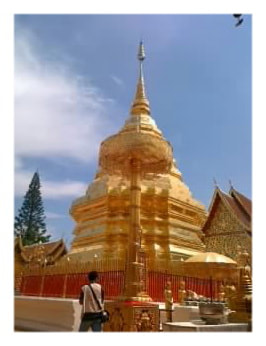
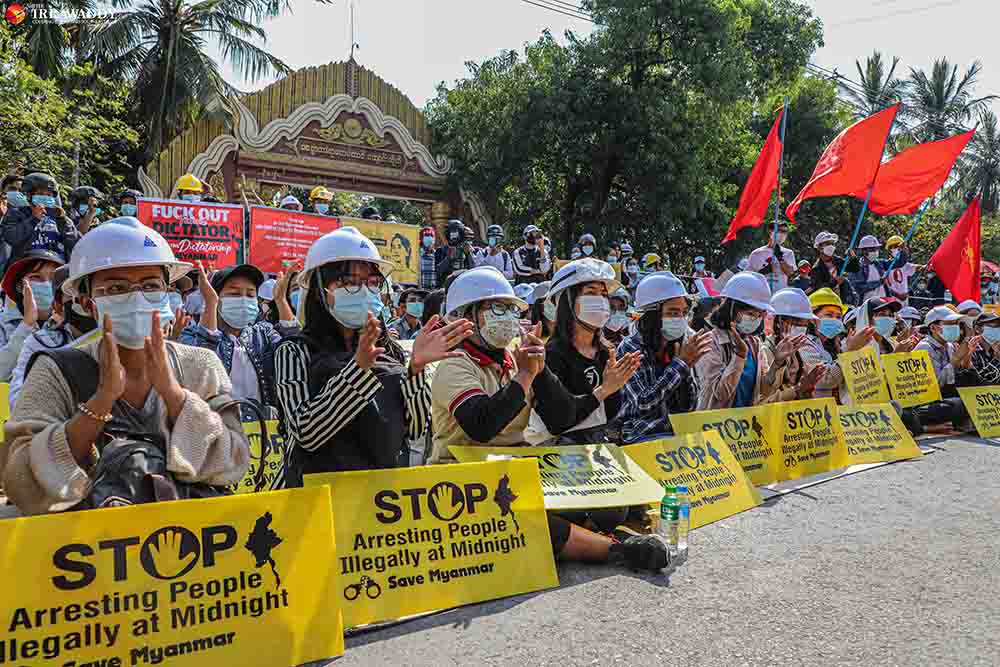
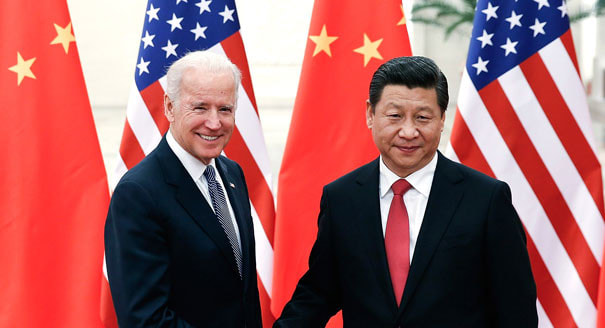
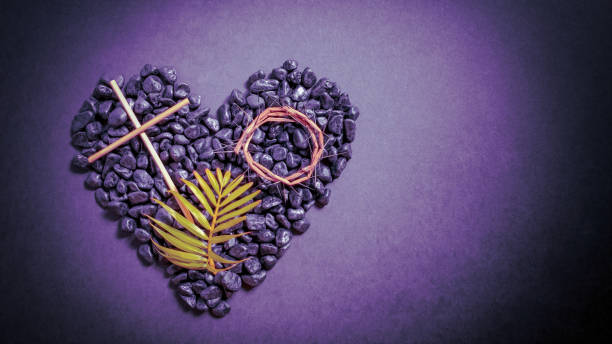
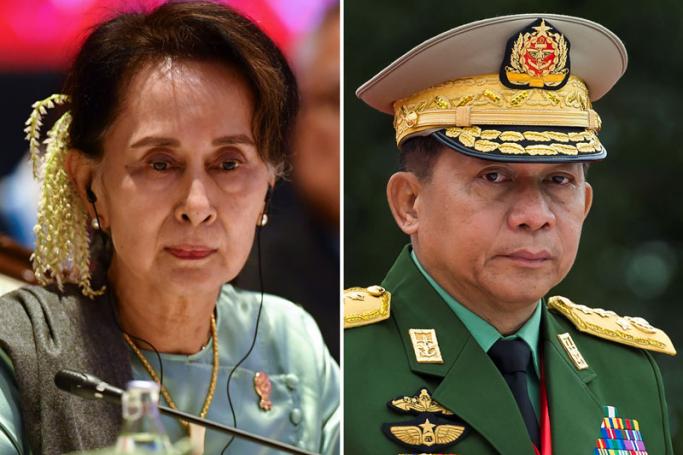
 RSS Feed
RSS Feed
